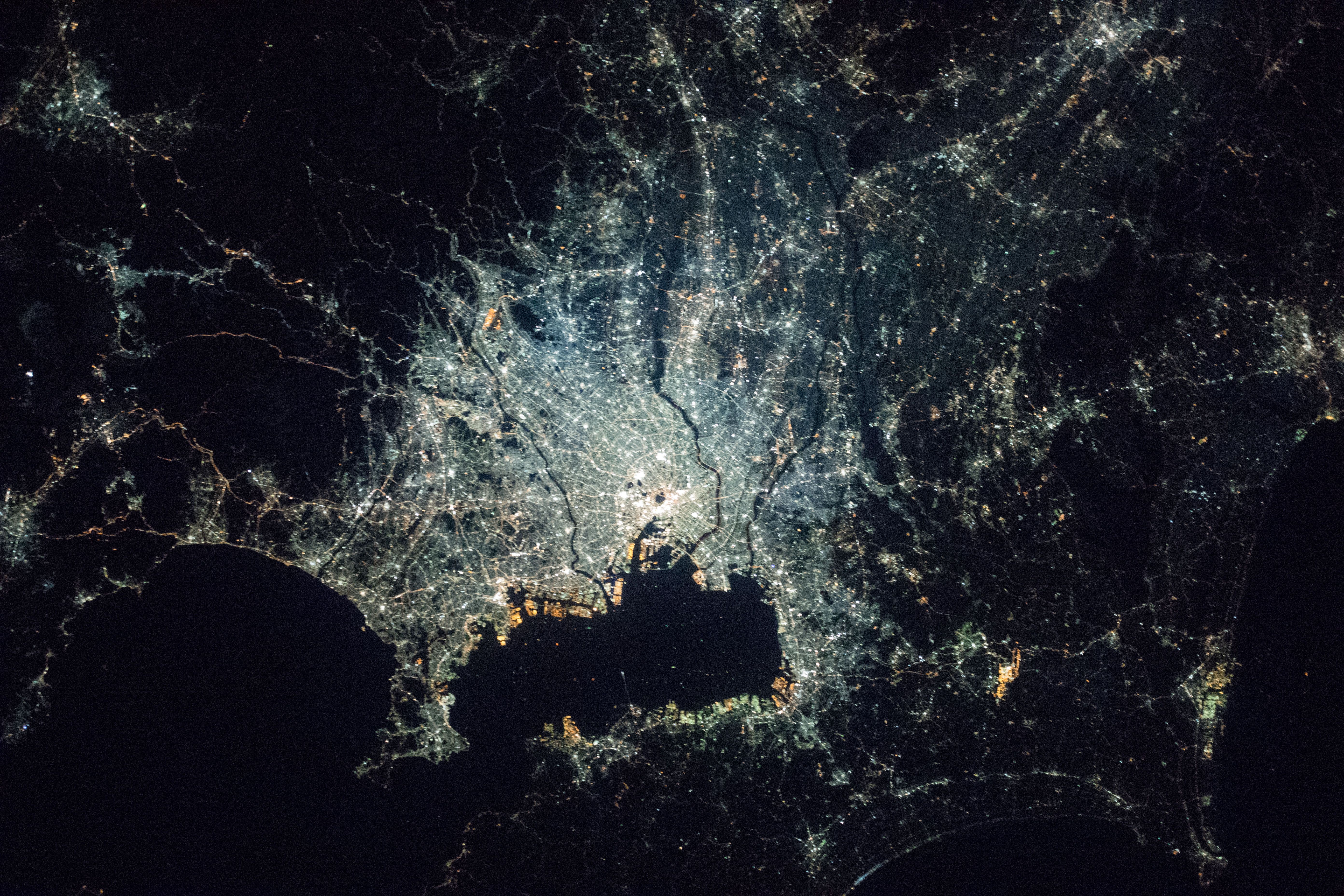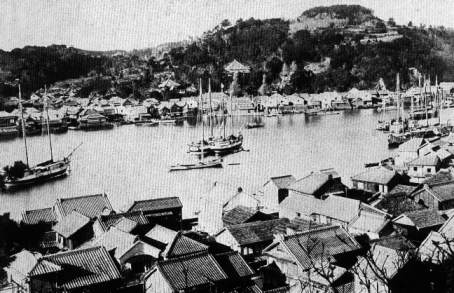|
Egawa Tarōzaemon
was a Japanese Bakufu intendant of the 19th century.#refJansenHall1989, Jansen, Hall 1989, p. 815. He was Daikan, in charge of the domains of the Tokugawa shogunate in Izu Province, Izu, Sagami Province, Sagami and Kai Provinces during the Bakumatsu period.#refJansenHall1989, Jansen, Hall 1989, p. 108. He took a leading role in the reinforcement of Japanese coastal defenses against Western encroachments in the 19th century. Coastal defenses Due to his holdings on the coast, Egawa Hidetatsu was involved in issues of coastal defences, critical to Japan at that time. He was in relations with the group of Watanabe Kazan, and Takano Chōei.#refCullen2003, Cullen 2003, p. 159. Egawa Hidetatsu was put in charge of establishing the defense of Tokyo Bay, Edo Bay against Western intrusions in 1839,#refCullen2003, Cullen 2003, pp. 158-159. following the incident of the ''Morrison'' under Charles W. King in 1837. In 1841, Egawa permitted the gunnery demonstrations of Takashima Shūhan to ... [...More Info...] [...Related Items...] OR: [Wikipedia] [Google] [Baidu] |
Nirayama, Shizuoka
was a town located in Tagata District, Shizuoka Prefecture, Japan. As of March 1, 2005, the town had an estimated population of 19,602 and a density of 566 persons per km². The total area was 34.63 km². On April 1, 2005, Nirayama, along with the towns of Izunagaoka and Ōhito (all from Tagata District), was merged to create the city of Izunokuni and thus it no longer exists as an independent municipality. During the Kamakura and Muromachi period, Niirayama was the site of a castle belonging to the Hōjō clan, and the later Hōjō clan. During the Edo period, it was the location of the ''daikansho'' offices of the Tokugawa shogunate controlling Izu Province was a province of Japan in the area of Shizuoka Prefecture. Nussbaum, Louis-Frédéric. (2005). "''Izu''" in . Izu bordered on Sagami and Suruga Provinces. Its abbreviated form name was . The mainland portion of Izu Province, comprising th .... Known for its strawberry crop, Nirayama sees many visi ... [...More Info...] [...Related Items...] OR: [Wikipedia] [Google] [Baidu] |
Izu Peninsula
The is a large mountainous peninsula with a deeply indented coastline to the west of Tokyo on the Pacific coast of the island of Honshu, Japan. Formerly known as Izu Province, Izu peninsula is now a part of Shizuoka Prefecture. The peninsula has an area of and its estimated population in 2005 was 473,942 people. The peninsula’s populated areas are located primarily on the north and east. Geology Tectonically, the Izu peninsula results from the Philippine Sea Plate colliding with the Okhotsk Plate at the Nankai Trough. The Philippine Sea Plate, the Amurian Plate, and the Okhotsk Plate meet at Mount Fuji, a triple junction. The peninsula itself lies on the Philippine Sea Plate. The southern portion of the peninsula is composed largely of breccia, and the central and northern portions consist of numerous highly eroded volcanoes. The Amagi Mountain Range dominates the center of the peninsula with Mount Amagi () and Mount Atami () in the east and Mount Daruma () in the west ... [...More Info...] [...Related Items...] OR: [Wikipedia] [Google] [Baidu] |
Edo Bay
is a bay located in the southern Kantō region of Japan, and spans the coasts of Tokyo, Kanagawa Prefecture, and Chiba Prefecture. Tokyo Bay is connected to the Pacific Ocean by the Uraga Channel. The Tokyo Bay region is both the most populous and largest industrialized area in Japan. Names In ancient times, Japanese knew Tokyo Bay as the . By the Azuchi–Momoyama period (1568–1600) the area had become known as after the city of Edo. The bay took its present name in modern times, after the Imperial court moved to Edo and renamed the city Tokyo in 1868. Geography Tokyo Bay juts prominently into the Kantō Plain. It is surrounded by the Bōsō Peninsula in Chiba Prefecture to the east and the Miura Peninsula in Kanagawa Prefecture to the west. The shore of Tokyo Bay consists of a diluvial plateau and is subject to rapid marine erosion. Sediments on the shore of the bay make for a smooth, continuous shoreline. Boundaries In a narrow sense, Tokyo Bay is the area north ... [...More Info...] [...Related Items...] OR: [Wikipedia] [Google] [Baidu] |
Uraga, Kanagawa
is a subdivision of the city of Yokosuka, Kanagawa Prefecture, Japan. It is located on the south eastern side of the Miura Peninsula, at the northern end of the Uraga Channel, at the entrance of Tokyo Bay. History With the establishment of the Tokugawa shogunate based in Edo at the start of the 17th century, the small village of Uraga developed rapidly due to its sheltered harbor and strategic location at the entrance of Edo Bay. The area was ''tenryō'' territory under direct control of the shogunate, and the increase in maritime traffic led to the development of merchant and trading firms in the area. In 1720, the shogunate established the post of '' Uraga bugyō'', whose responsibility was to police traffic and to organize coastal defenses, and the entrances to the harbor were fortified with cannon against possible incursions by foreign ships in violation of Japan’s national isolation policy. Still, in 1812, the British whaler stopped at Uraga and took on water, food, a ... [...More Info...] [...Related Items...] OR: [Wikipedia] [Google] [Baidu] |
Matthew C
{{disambiguation ...
Matthew may refer to: * Matthew (given name) * Matthew (surname) * ''Matthew'' (ship), the replica of the ship sailed by John Cabot in 1497 * ''Matthew'' (album), a 2000 album by rapper Kool Keith * Matthew (elm cultivar), a cultivar of the Chinese Elm ''Ulmus parvifolia'' Christianity * Matthew the Apostle, one of the apostles of Jesus * Gospel of Matthew, a book of the Bible See also * Matt (given name), the diminutive form of Matthew * Mathew, alternative spelling of Matthew * Matthews (other) * Matthew effect * Tropical Storm Matthew (other) The name Matthew was used for three tropical cyclones in the Atlantic Ocean, replacing Mitch after 1998. * Tropical Storm Matthew (2004) - Brought heavy rain to the Gulf Coast of Louisiana, causing light damage but no deaths. * Tropical Storm Matt ... [...More Info...] [...Related Items...] OR: [Wikipedia] [Google] [Baidu] |
Odaiba
today is a large artificial island in Tokyo Bay, Japan, across the Rainbow Bridge from central Tokyo. Odaiba was initially built in this area for defensive purposes in the 1850s. Reclaimed land offshore Shinagawa was dramatically expanded during the late 20th century as a seaport district, and has developed since the 1990s as a major commercial, residential and leisure area. Odaiba, along with Minato Mirai 21 in Yokohama, is among a few manmade seashores in Tokyo Bay where the waterfront is accessible, and not blocked by industry and harbor areas. For artificial sand beaches in the bay, Sea Park in Kanazawa-ku is suitable for swimming, Odaiba has one, and there are two in Kasai Rinkai Park area looking over to the Tokyo Disneyland. formally refers to one district of the island development in Minato Ward. Governor Shintaro Ishihara used ''Odaiba'' to refer to the entire , which includes the Ariake and Aomi districts of Kōtō Ward and the Higashi-Yashio district of Shinagawa ... [...More Info...] [...Related Items...] OR: [Wikipedia] [Google] [Baidu] |
Shinagawa Baidai Cannon
is a Special wards of Tokyo, special ward in Tokyo, Japan. The Ward refers to itself as Shinagawa City in English language, English. The Ward is home to ten embassies. , the Ward had an estimated population of 380,293 and a population density of 16,510 persons per km2. The total area is 22.84 km2. ''Shinagawa'' is also commonly used to refer to the business district around Shinagawa Station, which is not in Shinagawa Ward. This Shinagawa is in the Takanawa and Konan neighborhoods of Minato, Tokyo, Minato Ward, directly north of Kita-Shinagawa. Geography Shinagawa Ward includes natural uplands and lowlands, as well as reclaimed land. The uplands are the eastern end of the Musashino Terrace. They include Shirokanedai, Minato, Tokyo, Shiba-Shirokanedai north of the Meguro River, Megurodai between the Meguro and Tachiai Rivers, and Ebaradai south of the Tachiai River. The Ward lies on Tokyo Bay. Its neighbors on land are all special wards of Tokyo: Kōtō, Tokyo, Kōtō to ... [...More Info...] [...Related Items...] OR: [Wikipedia] [Google] [Baidu] |




